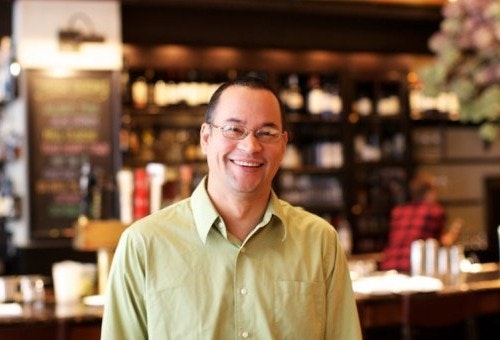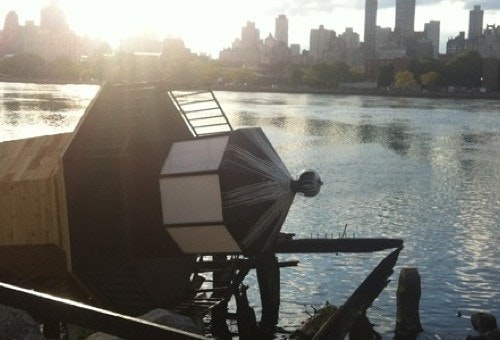HOUSE SECRETS: 9 ARTISTS, WRITERS & ACTORS IN THE BIZ
The image of the “struggling artist,” who’s just getting by bussing tables and pouring drinks until their big break, has long been a staple of pop culture. And while there’s definitely some truth to the cliché, it’s well overdue for an update.
Most artists need to have a steadier second gig – often teaching, but sometimes working in the service industry, which offers what many other professions don’t: flexible days, night shifts and cash in your pocket. Given the cost of living in New York and the scarcity of funding for the arts (it ain’t Denmark!), that source of income is usually the only sure way to pay the rent.
The way people feel about their service job runs the gamut: for some it’s an obstacle, for others it means peace of mind, and for a few, it’s an energizing part of the creative process. We talked to nine artists, writers and actors about their life and work. They’re the ones who take care of you when you’re going out, so here’s your chance to find out a little bit about them.

Steven Solomon – Artist, Partner at Hearth and Terroir, Captain at Gramercy Tavern
In last month’s New York Times review of Hearth, which celebrates its 10th anniversary this week, Pete Wells wrote, “The tension between Mr. Grieco’s confrontational wine list and Mr. Canora’s soothing menu is one of the springs that keeps Hearth in motion.” Also instrumental to that dynamic is Steven Solomon, a partner in the East Village Italian standout and its sister bar, Terroir. He’s known general manager and wine guru Paul Grieco since he started waiting tables years ago at Gramercy Tavern, where he still works a few nights a week as captain.
Solomon collaborated with Grieco most closely on Terroir (which now has five locations), conceiving the pop/punk graphics and dissonant typefaces, and teaming up on the “playful but spiky” voice that permeated the menu, the walls and the galvanizing Twitter feed. (He’s also responsible for the tagline: “the elitist wine bar for everyone.”) In the process, he spent a lot of late nights designing house T-shirts, stickers and tattoos to spread the word. In 2009 and 2010, he was nominated for a James Beard Award for Outstanding Restaurant Graphics. “We didn’t do anything that we ourselves weren’t amused by,” he says. It was an ongoing project that kept him pushing his limits, and it spurred him on in his own personal work.
His upcoming gallery show, which he’s preparing for a December opening, has some of its roots in his work for Terroir. He’s interested in “words becoming images, and images becoming words,” layering the different kinds of language (seen and heard) that you encounter in the city, and letting it all “activate the page.”
Solomon loves that restaurant life allows you to shed your preconceived notions about people once you get to talking with them, and to orchestrate meals around big moments in their lives. And as for whether he’d ever want to solely work on his own stuff? “It’s hard to say, if I had no financial constraints, how I would live. A lot of times, people go soft when they don’t have that tension.” Right now he’s rolling with the “three-ring circus,” relishing the “vitality that comes from having to hustle.”
The Speed Paste Robot New York show opens in December at Foliage Inc.


David McQueen – Sculptor, Captain at Gramercy Tavern
Some artists start out with plans for a sturdier career – like David McQueen, who was a pre-med student in college. But after enrolling in a sculpture class and staying up all night to finish a project, he knew that he wanted to keep making art. Once he decided to change course, he understood he was giving up stability. “I knew I’d be doing two things” from then on, he says.
As he anticipated, he now has two distinct work lives and makes it a point to keep them separate, out of respect for both. The first is as an artist making kinetic sculptures, which usually have a narrative thread. His most recent one came out of a residency this past summer at Socrates Sculpture Park in Queens. The view of the Blackwell Beacon on Roosevelt Island moved him to make his own fallen replica of it – which blinks out viewers’ text messages in Morse code.
His second role is serving as a captain for four nights a week at Gramercy Tavern, a position he’s held for eight years. Working at that level of hospitality “demands a lot of mental energy,” he says. “The drive is to anticipate someone’s needs and then surpass them.” He finds it “incredibly satisfying to watch someone actually relax and feel taken care of,” and recognizes that receiving such an immediate appreciative response is something that’s hard to come by in the art world – it usually only happens when you have a gallery opening.
McQueen goes to his studio at Wayfarers in Bushwick every day (he’s also on the board) and says he goes to sleep thinking about his projects there. And while he draws a hard line between his restaurant work and his artwork, the occasional bit of inspiration peeks through in the dining room. A recent piece he created with two lighthouses facing each other was prompted by observing, occasionally, when a couple in the restaurant was breaking up. He noticed that before getting up to leave, they’d often sit for a long time looking across the table at each other, without saying anything.
His sculpture One of us must have been sleeping, so I’ll tell you again tonight is on view at Socrates Sculpture Park through March 30, 2014.

(ORIGINAL ARTICLE)
HOUSE SECRETS

